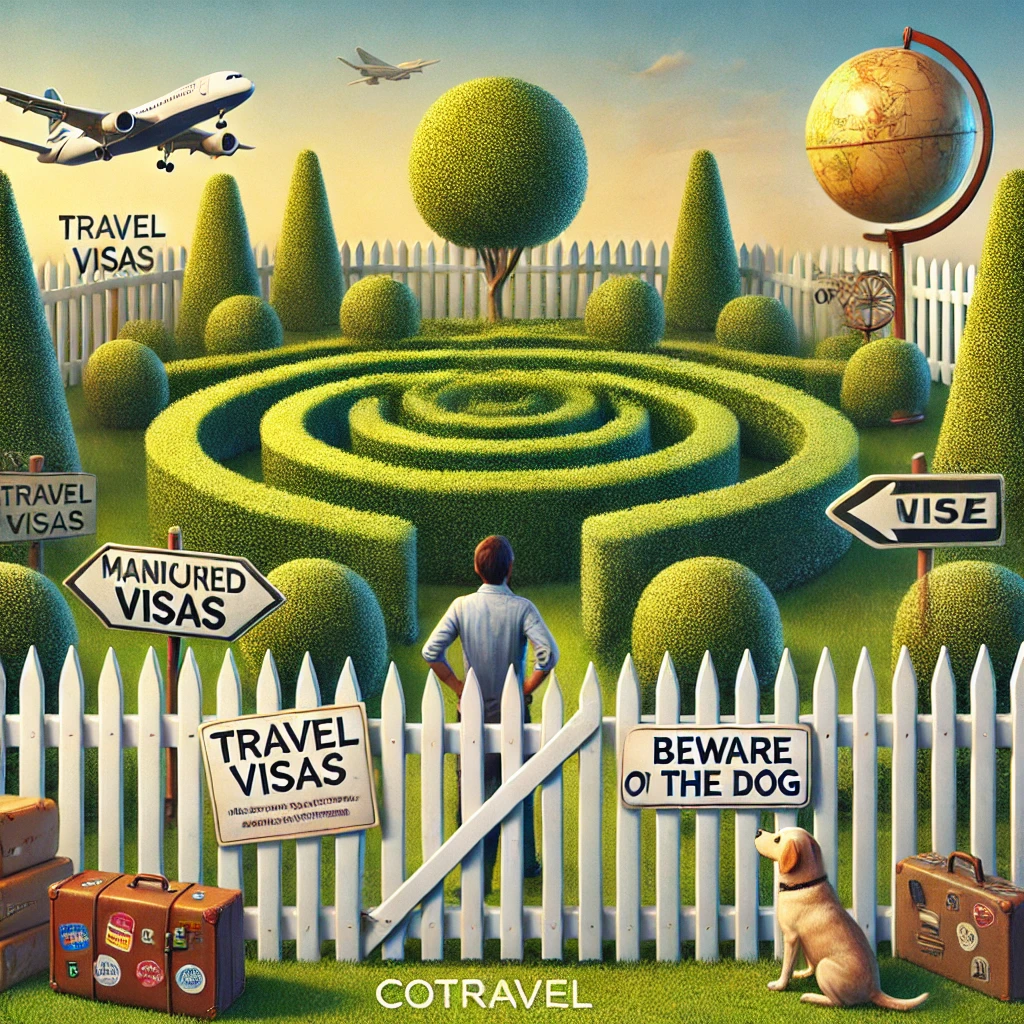
Travel Visas – Borders shape our journeys, both within ourselves and in the world we explore. How do they shape our journey? – by setting the tone of what is expected of us upon entry.
From the manicured hedge or a white picket fence to the daunting “Beware of the Dog” sign on a ten-foot metal fence, we may encounter all three barriers at different times, and each sends a different message.
The beautifully manicured hedge says, “Welcome. Feel free to walk up to the front door, but be polite and knock on the door to identify yourself, and remember, please don’t overstay your welcome.” This is similar to a country that has no visa requirements but has a maximum length of stay for your visit.
The picket fence requires a little more formality – lift a small latch and approach the front door. Could this be the simple eVisas, or Visas issued on arrival? All the same manners from the garden hedge example still apply.
The massive “Beware of the Dog” sign on a 6-foot-high metal gate tells you the owner is fully guarded and well-protected. You see the sign, see the gate, and you get an up-close and personal experience of “Cujo,” the killer dog. Only once “Cujo” is locked safely aside but still close enough to hear his bark are you allowed in.
There is nothing like the fear for one’s life to help you try to prove your very existence just because you want to go see a family member or perhaps take that Selfie with your “Stanley” mug on a much-needed holiday.
As individuals, we require personal space, and the inner psychological and emotional boundaries we set help maintain our well-being. Just as we need these boundaries, countries establish borders to safeguard their security, resources, and cultural identity. These serve as vital mechanisms for creating a sense of order, defining identity, and ensuring respectful and manageable interactions.
Imagine if Vasco da Gama had needed all this before he could embark on his explorations; the bureaucratic hurdles might have delayed or even prevented his groundbreaking voyages.
The concept of a visa has evolved, but the first modern visa system only began to take shape in the late 19th and early 20th centuries. One of the earliest recorded instances of a modern visa system was introduced by the Ottoman Empire in the late 19th century. However, the widespread adoption of the passport and visa system occurred after World War I. Before then it was Safe-Conducts, Letters of Introduction, Pilgrim Passes, Merchant Charters, Letters Patent and Certificates of Identity. Today’s visas have very similar requirements.
Australia has done a great job of streamlining the visa application process (and Australia requires everyone besides Australians to obtain a visa.) The Aussies have made it possible to do this 100 per cent electronically and without the need for a physical passport. Why don’t more countries follow their example? But don’t mess with the Aussies. Sure, they have an easier visa application process, but don’t even try to get into their country without the correct digital “paperwork.” You won’t even get a fresh apple past these officials, folks!
Unfortunately, visas don’t seem to be going anywhere anytime soon, so the most important advice I can offer in this regard is that too much is never enough. The more you have available to prove your position and purpose of travel, the better. Remember that they don’t mind you coming through the front door but want to know that you need to have a good enough reason to leave.
On a visa application, “N/A” is never a great answer, and the worst thing you can do is leave a blank space on your application form. So think of the man on the witness stand, pleading the 5th. “N/A”, in this case, works exactly the same way, and the blank space leaves far too much room for doubt. They ask questions for a reason; be respectful and do your best to answer them well.
Respecting boundaries, whether physical or emotional, is the key to harmonious exploration and travel. I hope my explanation of why Visas are necessary helps diminish some of the frustration you might have had while complying with them.
Book a quick consultation with me if you are stuck on a visa issue.
Follow Us On Socials